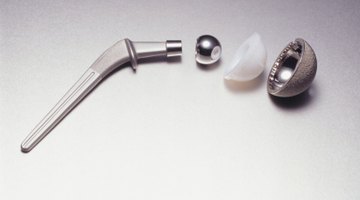How to Drill Titanium
Titanium is an extremely strong and low density metal originally discovered in the sixteenth century. As a result of its impressive qualities, it was named after the Titans of mythology.

Because of its light weight, strength, resistance to corrosion and the fact that it does not become magnetized, titanium is used in a variety of different commercial and industrial applications including in pacemaker cases, reactors, and turbine blades. Drilling titanium requires a great deal of planning and access to the proper equipment as the very attributes that make titanium desirable make drilling through it difficult.
-
Ensure that the proper drill tips are used when drilling titanium. While ordinary high speed drills can be used to drill titanium, ensure that the drill tips are designed specifically for drilling the metal. Carbide-tipped drill tips are the most effective on titanium and offer superior drill tip life expectancy.
-
Verify that the drill setup minimizes the unsupported section of the actual drill. The unsupported section of the drill should not be longer than is necessary to drill the required depth. This is critical as it is necessary to maintain maximum pressure on the titanium while drilling. Further, this drill arrangement allows for the easier flow of titanium chips out of the drill hole.
-
Maximize heat removal from the drill by ensuring a steady flow of cutting coolants to the drill. If available, utilize heat sinks to further preserve the life of the drill. The heat build-up which can quickly damage drills can also be minimized by ensuring that only extremely sharp drill tips are used. Immediately replace dull drill tips as they can inhibit the drilling process and produce large quantities of heat.
The Drip Cap
- Titanium is an extremely strong and low density metal originally discovered in the sixteenth century.
- While ordinary high speed drills can be used to drill titanium, ensure that the drill tips are designed specifically for drilling the metal.
- Verify that the drill setup minimizes the unsupported section of the actual drill.
- If available, utilize heat sinks to further preserve the life of the drill.
Writer Bio
Luther Blissett has written for a variety of online publications, blogs and newspapers on topics ranging from technology to politics. He runs his own small business. Blissett holds a B.A. in history and a J.D.
Photo Credits
- Photodisc/Photodisc/Getty Images
- Photodisc/Photodisc/Getty Images
More Articles



